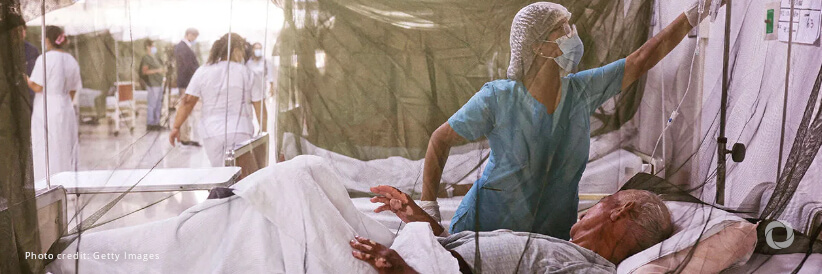A new report from the Pan American Health Organization (PAHO), The Health Workforce in the Americas: Regional Data and Indicators, reveals that 14 out of 39 countries in the Americas lack sufficient doctors, nurses, and midwives to meet the health needs of their populations.
Without immediate interventions, the Americas could face a deficit of between 600,000 and 2 million health workers by 2030, compromising universal health access and coverage.
“The health workforce is the backbone of our health care systems; without health care workers, it is simply not possible to speak of universal access or universal coverage,” said Dr. Jarbas Barbosa, PAHO Director. “This report provides us with concrete data to guide investment in training, retention, and decent working conditions, ensuring that health care reaches everyone,” he added.
With an average of 66.57 health workers per 10,000 population, the Region exceeds the WHO benchmark of 44.5. However, major inequalities persist: while countries such as Haiti (6.38) and Honduras (7.13) face critical shortages, Cuba and the United States have almost four times the target number. Factors such as limited training capacity, an aging workforce, migration (especially in the Caribbean), and unequal distribution widen the gap.
A diagnosis for action
The report examines the situation of the health workforce in the Americas based on eight key occupations—physicians, nurses, midwives, dentists, pharmacists, physical therapists, psychologists, and community health workers —and breaks the information down by country. Among the most relevant findings are aspects related to the availability, distribution, and composition of the workforce.
Nursing, the occupation for which the most data is available, is predominantly female (89.78%), with a density that varies considerably, ranging from 131.5 nurses per 10,000 population in the United States to just 3.84 in Haiti. While the regional average for physicians still shows a slight male majority (51.3%), one-third of countries report more women physicians than men, reflecting an ongoing process of feminization of the profession.
Only 14 countries reported data on psychologists, with the highest ratios reported by Argentina (17.98 per 10,000 population) and Costa Rica (16.85). Despite their essential role in mental health care, data gaps persist. The same is true for community health workers, who are key in primary health care. However, data on these workers are scarce outside Brazil and some Caribbean countries.
Midwifery is also a key occupation, as the care provided by skilled midwives during pregnancy, childbirth, and the postpartum period can be life-changing for mothers and children. However, the development of midwifery in the Region is limited. Midwives have a relatively sizable presence only in English-speaking Caribbean countries, such as Antigua and Barbuda, and in some South American countries, such as Chile.
Thirty-four countries reported data on dentists. Cuba (16.71), Chile (14.81), and Paraguay (12.81) have the highest densities. Twenty-three countries reported figures on pharmacists: Costa Rica had the highest density (11.56), followed by Canada (10.54) and the United States (10.45). Only 18 countries provided data on physical therapists. Chile leads, with a density of 18.46, followed by the United States (8.79).
The majority of health workers are between 35 and 44 years of age, indicating a relatively young workforce. However, aging is a concern in countries such as the United States and Guatemala, where almost half of physicians are 55 years of age or older, underscoring the need to train new generations.
“Without decisive action, these gaps will limit the ability of health systems to respond to the needs of the population,” warned Dr. James Fitzgerald, Director of PAHO’s Department of Health Systems and Services. “This report is a compass for governments. With strong information systems and technical cooperation, we can train more professionals and bring them to where they are most needed, in rural areas and marginalized communities,” he added.
Data-driven solutions
PAHO advocates strengthening human resources for health information systems (HRHIS) to monitor and plan, increasing training in midwifery and psychology, and designing intersectoral policies to retain talent.
The report concludes that, without strategic investments in training, regulation, working conditions, and health worker distribution, it will not be possible to move towards truly universal, equitable, and resilient health systems.
“The challenge is not just to have more health professionals, but to ensure that they are where they are most needed and that they have the right skills to meet the demands of the population,” Dr. Barbosa stressed.

